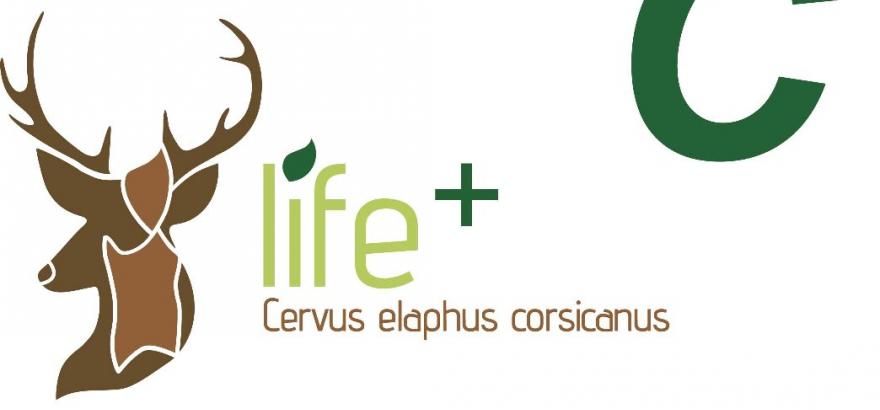Action C2: Capture, marking and application of satellite radio-collars
Species of Cervus elaphus corsicanus will be captured to allow health control, marking and application of satellite radio-collars.
The deer’s captures will be carried out in the Medio Campidano Province, through the use of three capture’s collars. The captured animals are sedated through the use of an anesthetic dart. Operators can work in safety and thus they can capture more species at the same time.
The “free-ranging” technique can be also applied. It consists in an outdoor research of animals at night with the use of specifically equipped off-road vehicles. The deer will be hit with a gunshot at a maximum distance of 30 m; the species will be sedated through darts equipped with transmitter.
The health control on the captured animals includes:
- detection of rectal temperature;
- respiration and heart rate;
- blood and faeces collection, weighing and morphometric analyses.
The health control, which particularly focuses on “brucellosis” and “blue tongue”, will be carried on during the species’ capture. They will be stocked in a small corral in the releasing areas for two days until all results are obtains. Animals affected by critical diseases will not be included in the reintroduction’s operations.
Before transportation to the parking corrals, the animals will be equipped with radio-collars and ear tags. With the aim to verify the efficiency of the reintroduction’s operations, the animals will be released with unique markings, in order to allow the localization and the individual recognition. In particular, the marking through radio-collars is to be considered a priority to the first releases, in order to get real time information about the survival, dispersion and use of habitat of the reintroduced species. Pondering current available technologies as well as previous experiences of marking makes radio-collars the best choice for both the marking and the radio-telemetric monitoring of animals. Moreover, all the species will be individually marked through ear tags, reporting a numerical/colored code that allows unequivocally recognition at distance. The ear tags should be made of soft plastic with different colors based on specific protocols, which provide a differentiation per sex or per core of release.
For the marking and the capture’s operations the presence of a vet is required as well as the support of a group of operators (3 or 4).
The Sardinian deer will be directly reintroduced in nature, without permanence in paddocks of pre-acclimatization (hard release method).
During the project will be captured 120 Sardinian Deer.
The captures will take place inside the SIC ITB 040031 (Monte Arcuentu- Rio Pixinas), in the territories of Cantieri Ente Foreste Crocorigas (Guspini) and Arbus, or even in neighboring areas. To avoid missing the aim, it’s necessary to begin the capture during the second year (2013) and keep it going throughout 2017, for a total of 5 years. The Sardinia Forestry Commission has already managed this kind of operations and it can provide the technical personnel with a lot of experience.
The original population is estimated in 1800 animals: the sampling regards the 6.6% of the amount and it takes place in area where the species is in strong growth





















